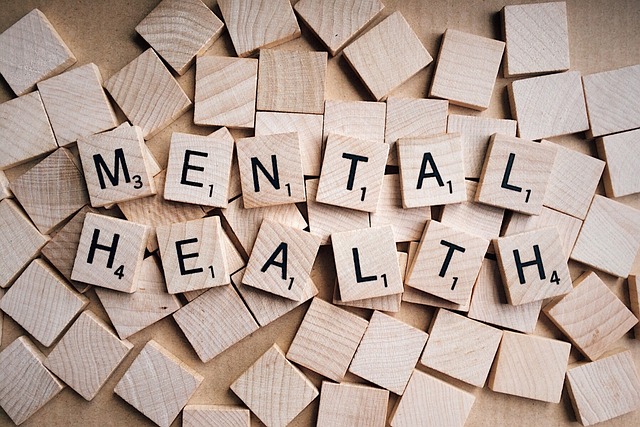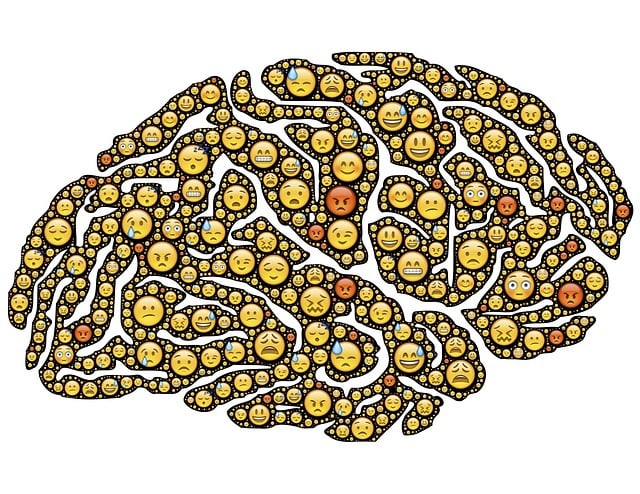Children experiencing chronic pain are vulnerable to substance abuse as a coping mechanism due to limited access to age-appropriate therapy. This complex issue highlights the urgent need for culturally sensitive mental healthcare, focusing on crisis interventions tailored to individual backgrounds. Early recognition of risks and timely interventions, including open communication and pain management skills, can prevent escalation. Therapy for Children Chronic Pain, integrating Emotional Intelligence and family-based approaches, effectively addresses substance abuse prevention. Community support systems, offering peer groups, holistic programs, and stress management techniques, play a crucial role in mitigating risks and fostering healthier coping strategies, emphasizing the importance of early intervention and tailored prevention.
In the context of childhood chronic pain, the risk of substance abuse is a growing concern. This article delves into comprehensive strategies to mitigate these risks, focusing on a holistic approach to therapy for children suffering from chronic pain. We explore the intricate link between persistent pain and substance misuse, providing insights on identifying early warning signs. From therapeutic interventions targeting safe pain management to family-based programs and community support systems, this guide offers practical solutions to prevent and reduce substance abuse among children with chronic pain.
- Understanding the Connection Between Chronic Pain and Substance Abuse in Children
- Identifying Early Signs: Recognizing Potential Risks for Abuse
- Therapeutic Approaches for Treating Chronic Pain Safely
- Family-Based Interventions for Risk Mitigation
- Community Support Systems and Long-Term Prevention Strategies
Understanding the Connection Between Chronic Pain and Substance Abuse in Children

Children experiencing chronic pain often turn to substance abuse as a coping mechanism, highlighting a critical connection that requires understanding and targeted intervention. This relationship is complex, influenced by various factors including age-appropriate treatment options for pain management and the lack thereof. Many kids, especially those from underserved communities, may not have access to effective therapy for their chronic pain, leading them to seek alternative relief through substances.
The integration of cultural sensitivity in mental healthcare practice is paramount here. Crisis intervention guidance tailored to these young patients’ unique backgrounds and experiences can significantly impact risk assessment for mental health professionals. By understanding the interplay between chronic pain and substance abuse in children, healthcare providers can offer better support, prevent escalation, and guide these individuals towards healthier coping strategies.
Identifying Early Signs: Recognizing Potential Risks for Abuse

Recognizing potential risks for substance abuse early on is a vital step in preventing chronic pain issues from escalating. Parents and caregivers play a crucial role in identifying the early signs, which can often be subtle changes in behavior or emotional regulation. Children experiencing chronic pain may turn to substances as a means of coping, especially if they lack appropriate conflict resolution techniques or have not been taught effective emotional management strategies.
The ability to recognize these signs can help initiate timely interventions and guide children towards healthier coping mechanisms. This might include encouraging open communication about their feelings, providing support for building confidence, and teaching them skills to manage pain and stress. Early intervention through therapy for children with chronic pain can prevent the development of dependency and substance abuse disorders, promoting long-term well-being.
Therapeutic Approaches for Treating Chronic Pain Safely

In the context of substance abuse prevention, especially among children and adolescents suffering from chronic pain, therapeutic approaches play a pivotal role in safe and effective treatment. One such approach is integrating Emotional Intelligence (EI) into pain management plans. By fostering empathy and understanding, healthcare providers can build strong therapeutic alliances with young patients, enhancing their ability to cope with pain without resorting to substance abuse. EI strategies not only help in burnout prevention for healthcare providers but also empower children to express and manage their emotions constructively.
Additionally, implementing specific empathy-building strategies has proven beneficial. These include active listening, reflecting feelings, and normalizing experiences. Such tactics create a supportive environment that encourages open communication about pain experiences. This openness is crucial for tailoring treatment plans that address both the physical and emotional aspects of chronic pain. Moreover, these therapeutic methods can be incorporated into broader burnout prevention strategies for healthcare providers, ensuring they remain empathetic and effective in supporting young patients on their road to recovery.
Family-Based Interventions for Risk Mitigation

Family-based interventions play a pivotal role in mitigating risks associated with substance abuse, especially when addressing chronic pain in children. These interventions focus on strengthening family dynamics and fostering healthier coping mechanisms. By involving the entire family unit, therapists can create a supportive environment that encourages open communication about pain management and emotional well-being. This approach not only helps children develop effective strategies to deal with their pain but also educates parents on recognizing and responding to their child’s needs.
One such strategy is incorporating stress management workshops within the family setting. These workshops teach both children and parents techniques to reduce stress and anxiety, which are often contributors to substance abuse. Additionally, crisis intervention guidance tailored for families can provide immediate support during challenging times, helping them navigate crises without resorting to substances. Social skills training is another valuable component, empowering children with the abilities to interact positively with peers and seek help when needed.
Community Support Systems and Long-Term Prevention Strategies

Community support systems play a pivotal role in mitigating substance abuse risks, especially when tailored to long-term prevention strategies. By fostering connections and providing a safe haven, these systems offer individuals, particularly those grappling with chronic pain, alternative avenues for coping mechanisms. Through peer support groups, community therapy sessions, and holistic wellness programs, individuals can learn self-care practices and develop effective coping skills, effectively reducing the allure of substance abuse as a means of relief or escape.
Targeting at-risk populations early on is crucial, including children with chronic pain who may be more susceptible to developing unhealthy coping habits. Implementing school-based interventions, after-school programs, and family counseling can help build resilience and prevent burnout, not just for the individuals but also for healthcare providers who often bear the brunt of these challenges. Incorporating stress management techniques, mindfulness practices, and positive self-talk into daily routines can serve as powerful tools within these support systems, fostering both short-term relief and long-lasting behavioral changes.
In addressing the intricate link between chronic pain and substance abuse in children, a comprehensive approach is essential. By understanding early risk signs, implementing therapeutic strategies like family-based interventions, and leveraging community support systems, we can effectively mitigate these risks. Safeguarding our young ones from substance abuse begins with recognizing vulnerabilities and providing proactive solutions, such as safe therapy for children chronic pain management. Through these combined efforts, we can foster a healthier and more secure environment for children, preventing substance abuse and promoting long-term well-being.














